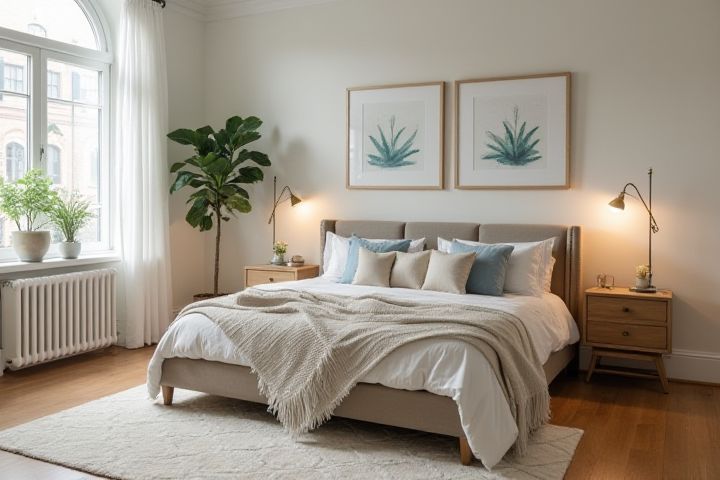
House staging requires several key elements to create an inviting atmosphere that attracts potential buyers. You should start by decluttering spaces to showcase their full potential, removing personal items and excess furniture. Next, consider a thorough deep clean of each room, making surfaces shine and creating a fresh environment. Strategic furniture placement and the use of neutral color palettes can enhance flow and allow buyers to envision their own style in the space. Finally, incorporating tasteful decor, such as fresh flowers or cozy textiles, adds warmth and makes your home memorable.
What Is Needed For House Staging
Declutter the space
To effectively declutter your space for house staging, start by removing at least 30% of your belongings, creating a more open and inviting atmosphere. Focus on high-traffic areas such as the living room, kitchen, and bathrooms, ensuring these spaces feel spacious and functional. Utilize storage solutions, such as baskets and bins, to organize remaining items while keeping surfaces clear and tidy. Remember, potential buyers want to envision themselves in the home, so a decluttered environment allows your property's features to shine.
Depersonalize the decor
Depersonalizing decor is a crucial step in effective house staging, as it helps potential buyers envision themselves in the space. Remove personalized items such as family photos, trophies, and unique artwork, replacing them with neutral decor that appeals to a wider audience. Consider utilizing neutral color palettes, such as whites, grays, and beiges, to create an inviting and unobtrusive atmosphere. By minimizing personal touches, you can ensure that your home feels like a blank canvas for buyers, enhancing the overall appeal and increasing the likelihood of a successful sale.
Clean thoroughly
Thorough cleaning is essential for effective house staging, as it creates an inviting atmosphere that can significantly impact potential buyers' impressions. Start by dusting all surfaces, including light fixtures, ceilings, and baseboards, as accumulated dust can detract from your home's appeal. Pay particular attention to high-traffic areas, like kitchens and bathrooms, ensuring that appliances are spotless and countertops are decluttered. A pristine environment not only emphasizes your home's space but also highlights its features, making it more attractive and facilitating a quicker sale.
Neutral color palette
A neutral color palette is essential for effective house staging, as it creates an inviting and versatile environment. Utilize shades such as beige, gray, and soft whites to enhance natural light and make spaces appear larger; research shows that homes with neutral tones sell 20% faster. Complement the palette with carefully selected decor and furniture pieces that accentuate the room's features without overwhelming them. For maximum impact, use consistent hues throughout the home to ensure a cohesive visual flow, appealing to a broader range of potential buyers.
Strategic furniture placement
Strategic furniture placement is essential for effective house staging, emphasizing the spatial flow and functionality of each room. Placing furniture away from entryways can create a more inviting atmosphere, while positioning key pieces, such as sofas and chairs, in a conversational arrangement encourages engagement and interaction. Consider using scaled-down, neutral-toned furnishings to create the illusion of more space, making rooms appear larger and more open. For optimal impact, ensure that each room highlights its intended purpose, enhancing your potential buyer's ability to envision themselves living in the home.
Enhance curb appeal
Enhancing curb appeal is crucial for effective house staging, as it creates an inviting first impression. Start by maintaining your lawn with a well-manicured appearance and vibrant flowers, which can increase perceived property value by up to 10%. Fresh paint on the front door and tidy landscaping, including trimmed hedges and clean walkways, can significantly improve visual appeal. Consider adding outdoor lighting to illuminate pathways, making the home feel warm and welcoming, especially during evening showings.
Proper lighting
Proper lighting is essential for effective house staging, as it enhances the ambiance and highlights key features of your space. Aim for at least 300 lumens per square meter to create a warm and inviting atmosphere. Incorporate a mix of ambient, task, and accent lighting; this could include overhead fixtures, table lamps, and strategically placed spotlights to draw attention to architectural details. Consider using soft white bulbs in the range of 2700-3000 Kelvin to achieve a cozy feel while ensuring all areas are well-lit and inviting.
Use mirrors to enlarge spaces
Using mirrors strategically can effectively enlarge spaces in house staging. Placing large, reflective mirrors on walls enhances natural light, creating an illusion of depth and openness in smaller areas. You should position them opposite windows to maximize light reflection and brighten dark corners, giving potential buyers a welcoming ambiance. Incorporating various mirror shapes and sizes not only amplifies space but also adds aesthetic interest, making your staged home more appealing.
Fresh flowers or plants
In house staging, incorporating fresh flowers or plants can enhance the ambiance and appeal of your space significantly. Research indicates that homes with vibrant greenery often sell 20% faster because these elements evoke feelings of warmth and serenity. Specific choices, like a bright bouquet in the living room or a potted plant in the kitchen, can create focal points that draw the eye and make rooms feel more inviting. For best results, opt for seasonal flowers or easy-to-care-for plants that can withstand varying light conditions, ensuring your home remains fresh and attractive throughout the staging process.
Highlight key features
Effective house staging emphasizes key features that appeal to potential buyers and create an inviting atmosphere. Start by decluttering spaces, allowing the natural flow and architectural details like crown molding or hardwood floors to stand out. Use neutral color palettes to highlight the home's best attributes, ensuring that your aesthetic choices don't distract from structural elements. Finally, strategically placed furniture should enhance room size perception, drawing attention to unique selling points such as fireplaces, large windows, or open floor plans.
